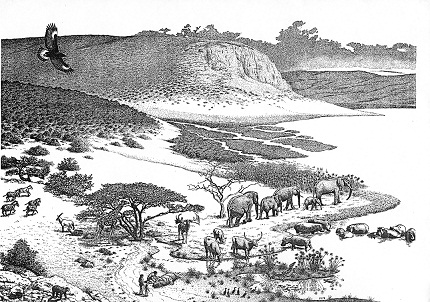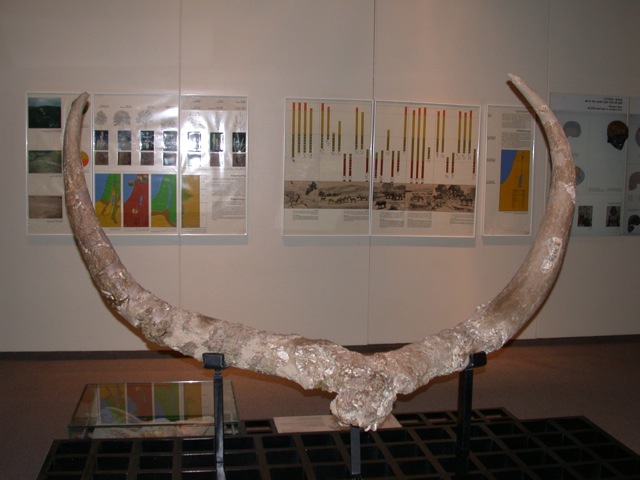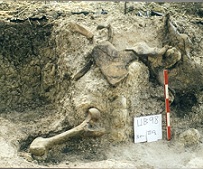During the Early Pleistocene, early Homo dispersed out of Africa and into Eurasia. The tempo and mode of this dispersal is still very much unknown. Several hypotheses have been put forth to explain the push from Africa and the pull into Eurasia. Of these, paleoecological hypotheses have been studied as some of the main causes for the successful dispersal of early humans. Specifically, it was argued that early humans were adapted to east African savanna environments and that they dispersed into similar environments in Eurasia. In contrast, others have suggested (Belmaker, 2010) that the dispersal of humans was into novel environments and habitats.

Paleoecological reconstruction of ‘Ubeidiya as savanna grassland 
Paleorovis oldowayensis from ‘Ubeidiya (Israel Museum, Jerusalem)
This research includes the paleoecological analysis of Plio-Pleistocene sites in the Levant and includes the analysis of large and small fauna of ‘Ubeidiya, Israel and Kurtan, Armenia. Methods include multivariate analysis, ecomorphology and microwear.
Current Research and Collaborations
Past Research
Publications:
- Martínez-Navarro, B., Belmaker, M. and Bar-Yosef, O. (2012) The Bovid assemblage (Bovidae, Mammalia) from the Early Pleistocene site of ‘Ubeidiya: Biochronological and biogeographical implications for the fossil and lithic bearing strata. Quaternary International 267: 78 – 97.
- Belmaker, M. (2010). Early Pleistocene faunal connections between Africa and Eurasia: An ecological perspective. In Out of Africa I: The First Hominin Colonization of Eurasia (Fleagle, J.G., Shea, J.J., Grine, F.E., Baden, A.L., Leakey, R.E., eds.) Vertebrate Paleobiology and Paleoanthropology Series. Springer, Dordrecht. pp. 183-205 (invited).
- Belmaker, M. (2010) The presence of a large cercopithecine (cf. Theropithecus sp.) in the ‘Ubeidiya Formation (Early Pleistocene, Israel). Journal of Human Evolution 58: 79-89.
- Martínez-Navarro, B., Belmaker, M. and Bar-Yosef, O. (2009). The large carnivores from ‘Ubeidiya (Early Pleistocene, Israel): Biochronological and biogeographical implications. Journal of Human Evolution 56: 514-524.
- Belmaker, M. (2005). Using comparative micromammal taphonomy to test palaeoecological hypotheses: ‘Ubeidiya, a Lower Pleistocene site in the Jordan Valley, Israel, as a case study. In Biosphere to Lithosphere: New Studies in Vertebrate Taphonomy (O’Connor, T. ed.) Oxbow Books, Oxford. pp. 110-125.
- Belmaker, M., Tchernov, E., Condemi, S. and Bar-Yosef, O. (2002). New evidence for hominid presence in the Lower Pleistocene of the Southern Levant. Journal of Human Evolution 43: 43-56.
- Belmaker, M. (2002). Community structure changes through time – ‘Ubeidiya as a case study. In Archaeozoology of the Near East V. Proceedings of the Fifth International Symposium on the Archaeozoology of Southwestern Asia and Adjacent Areas. (Buitenhuis, H., Choyke, A.M., Mashk- our, M. and Al-Shiyab, A.H. eds.). ARC publications 62, Center for Archeological Research and Consultancy, Rijksuniversiteit, Groningen, The Netherlands. pp. 9-22.

